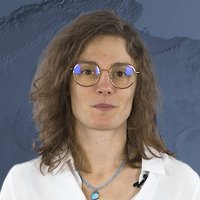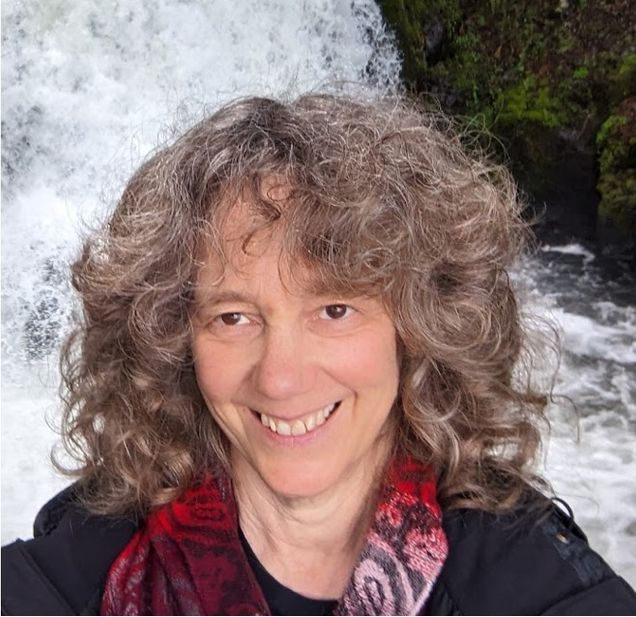AI for Understanding Earthquakes Symposium
Date: Thursday, May 8, 2025
Start & End Time: 10:00am – 3:00pm ET
Location (In-person only): Boston University, Duan Family Center for Computing & Data Sciences, 665 Commonwealth Ave, Room 1101 (11th floor), Boston, MA
Logistics Information
Boston University, Center for Computing & Data Sciences, 665 Commonwealth Ave, Room 1101 (11th floor), Boston, MA. (To access the upper floors, please use the elevators near Saxby’s café.)
Public Transportation
Due to limited parking & potential construction, we encourage public transportation. MBTA Green Line B branch, as well as a few minutes walking distance from stops on the C (St. Mary’s Street) & D (Fenway) branches.
Parking
On-street, two-hour meter parking is limited & available on Commonwealth Ave. There is free two-hour parking on the side streets.
Hotel Suggestions
Below are our recommended hotels for participants attending the event. We suggest making reservations as early as possible to secure your stay.
• Hotel Commonwealth (866-784-4000) is a 10-minute walk.
• Eliot Hotel (1-800-44-ELIOT) is a 15-minute walk.
• Hyatt Regency Cambridge (1-800-233-1234) is a 5-minute taxi across the river.
Boston University Wifi
The BU Guest network allows visitors to access the Internet through BU’s wireless network. Please note that personal wireless access points are prohibited on the BU network because they interfere with network traffic. To access BU Guest (unencrypted): Connect to the network called “BU Guest (unencrypted)“ from your list of available networks.
Symposium Mission:
AI techniques are increasingly important in the study of seismic events and changes in the structure of the earth over time. For the last year, we have been undergoing a focused research project through the Hariri Institute at Boston University to develop novel approaches of using AI for understanding earthquakes. The goal of this symposium is to foster discussion around the use of machine learning and AI in the study of earthquakes, and to build new collaborations in this area.
This symposium is organized by the Hariri Institute’s funded AI for Understanding Earthquakes Focused Research Program (FRP.) To learn more visit: https://www.bu.edu/hic/ai-for-understanding-earthquakes/
BU Hosts:
Program
10:10am – 10:40am: “Opportunities for AI to Rapidly Forecasting Earthquake Shaking” with Timothy Clements, Research Geophysicist at the U.S. Geological Survey’s Earthquake Science Center at Moffett Field, CA
10:40am – 11:10am: “Rapid Earthquake Magnitude Estimation on Fiber Optic Cables and Strain Meters via Machine Learning” with Theresa Sawi, Mendenhall Postdoctoral Research Fellow at the U.S. Geological Survey’s Earthquake Science Center at Moffett Field, CA. Please note Theresa will be presenting remotely to our in-person audience.
11:10am – 11:30am: Summary of Our Hariri Institute Focused Research Program with Brian Kulis, Core Faculty of Hariri Institute’s AI in Research Initiative, Associate Professor of Engineering, (ECE, CS, SE), CISE Faculty Affiliate and Faculty of Computing and Data Sciences; Janusz Konrad, Affiliate Faculty of the AI in Research Initiative at the Hariri Institute and Professor of Electrical and Computer Engineering; and Prakash Ishwar, Professor of Electrical and Computer Engineering and Affiliate Faculty of the AI in Research Initiative at the Hariri Institute
11:30am – 12:00pm: Discussion
12:00pm – 1:00pm: Lunch
1:00pm – 1:30pm: “Machine Learning and Remote Sensing for Earthquake Characterization” with Sophie Giffard-Roisin, Visiting Fulbright Research Scholar at the Lamont Observatory, Columbia University
1:30pm – 2:00pm: “Applications of LLMs in Earthquake Science: Estimating the Intensity of Ground Motion” with Mostafa Mousavi, Assistant Professor of Geology, Geophysics, and Planetary Science at Harvard University
2:00pm – 3:00pm: Discussion / Breakouts
Speakers:
Mostafa Mousavi, Assistant Professor of Geology, Geophysics, and Planetary Science at Harvard University
Abstract: Generative AI and Large Language Models (LLMs) have recently emerged as transformative technologies, revolutionizing various fields with their ability to generate complex outputs across diverse modalities. While these models have driven significant advancements in areas like natural language processing and computer vision, their potential for scientific applications remains largely unexplored. This study investigates the capabilities of LLMs to advance seismological research and enhance societal resilience to natural disasters. Using Gemini, Google’s most capable LLM, we estimate earthquake ground shaking intensity from multimodal social media posts and show how these estimates align with independent observational data. We demonstrate how Gemini can contribute to a deeper understanding of earthquake impacts, improve natural disaster mitigation strategies, and potentially aid in rapid earthquake response and damage assessment. Through this example application, we aim to showcase the power and potential of generative AI and LLMs for applications in seismology and earthquake science.

- Bio: S. Mostafa Mousavi is an observational earthquake seismologist who uses AI to process large seismic datasets and gain insights into earthquake characteristics and dynamics. His research is an interdisciplinary blend of seismology, statistics, and computer science, focused on extracting insights about Earth’s physical processes from seismic signals. He is currently an assistant professor at Harvard and a research scientist at Google, where he works on the world’s largest and fastest Earthquake Early Warning system.
Sophie Giffard-Roisin, Visiting Fulbright Research Scholar at the Lamont Observatory, Columbia University
Abstract: Machine learning has proven its usefulness in geoscience and seismology in recent years, for example in seismic picking. Similarly, machine learning applied to remote sensing has shown great effectiveness in solving large-scale tasks such as land cover mapping and atmospheric forecasting. In all these cases, large amounts of labeled data were available, thanks to manual or semi-automated methods.
However, for certain applications—particularly regression or characterization problems—real labeled data is often not accessible. In this talk, we will explore how physical simulations, combined with real remote sensing data, can be used to generate realistic labeled samples for training machine learning models. We will focus specifically on earthquake optical image correlation and fault scarp characterization.

- Bio: Sophie Giffard-Roisin has been a permanent researcher at the ISTerre laboratory in Grenoble, France since 2019, working on machine learning applied to natural hazards, particularly using remote sensing. She is currently a Fulbright Scholar Fellow at the Lamont-Doherty Earth Observatory, Columbia University.
Theresa Sawi, Mendenhall Postdoctoral Research Fellow at the U.S. Geological Survey's Earthquake Science Center at Moffett Field, CA
Abstract: As the volume and variety of seismic data increases, opportunities for seismologists to apply machine learning methods to these data for the purpose of earthquake early warning (EEW) becomes more apparent. Distributed Acoustic Sensing (DAS) utilizes fiber optic cables to measure shaking of the earth and offers a promising approach for EEW in subduction zones (i.e., underwater settings) where seismic networks are costly to maintain. However, key challenges remain in estimating earthquake magnitudes from DAS data, namely that locations are difficult to estimate given the primarily linear geometry of the DAS arrays, and due to the high volumes of data created by DAS, which can quickly reach the TB-range. Here, we develop a machine learning method to distinguish large (M≥5.4) earthquakes from smaller ones within the first 4 seconds of a strain waveform after an initial earthquake arrival, without needing to determine earthquake location. Using a deep learning method to pick the earthquake arrivals on the DAS data, then using ensemble decision tree models trained on borehole strainmeter data (3.5≤M≤7.1) and tested on onshore DAS waveforms (3.5≤M≤7), we find that low-frequency wavelengths used in continuous wavelet transform coefficients are the strongest predictors of magnitude. Our method shows high precision compared to real-time EEW systems, supporting the use of DAS for terrestrial and submarine earthquake monitoring.

- Bio: Dr. Theresa Sawi is a Mendenhall Postdoctoral Research Fellow at the U.S. Geological Survey’s Earthquake Science Center at Moffett Field in California. She researches how distributed acoustic sensing (DAS), i.e., fiber optic cables, can be utilized to improve earthquake early warning. Her work seeks to better understand the rupture processes of large earthquakes, the behavior of repeating earthquake sequences, and generally how to best apply machine to aid in solving seismological problems. Her scientific interests also include seismic array processing and seismicity in fluid-rich glaciers.
Timothy Clements, Research Geophysicist at the U.S. Geological Survey's Earthquake Science Center at Moffett Field, CA
Abstract: Earthquake early warning (EEW) systems characterize when and where strong shaking is expected as soon as possible after an earthquake starts. By necessity, EEW systems run 24/7 and deliver shaking alerts in an automated manner. There is an inherent tradeoff between the speed and accuracy of EEW alerts – the earliest shaking alerts based on initial data are more likely to be inaccurate, whereas more reliable shaking predictions often arrive after they are needed. An AI-based shaking forecasting system could offer faster and more accurate predictions by learning the complexities of ground motion physics from the wealth of archived seismic data. Here, we introduce two approaches to AI shaking forecasting: (1) the Graph Prediction of Earthquake Shaking (GRAPES) model, which characterizes EEW as a spatio-temporal graph learning problem and predicts future shaking across a seismic network using an end-to-end set of convolutional, fully connected, and graph neural network layers and (2) the Generate Unsupervised Aftershock Velocity Amplitudes (GUAVA) model, a generative pre-trained transformer with ~100 million model parameters that generates time series of ground motion intensity autoregressively. We train both models to forecast future shaking using massive sets of seismic waveforms recorded in Japan and California. We show that AI-based shaking forecasts perform well through learning expressive representations of the seismic wavefield and the statistics of earthquakes.

- Bio: Tim Clements is a research geophysicist at the U.S. Geological Survey’s Earthquake Science Center in Moffett Field, CA. He conducts research on earthquake early warning, ground motion forecasting, and low-cost sensor development with a focus on applying computation to continuous seismic waveforms.
AI for Understanding Earthquakes Symposium Registration
For administrative questions, please email Katherine D’Angelo, Assistant Director, Programs & Events, at ktd@bu.edu.


